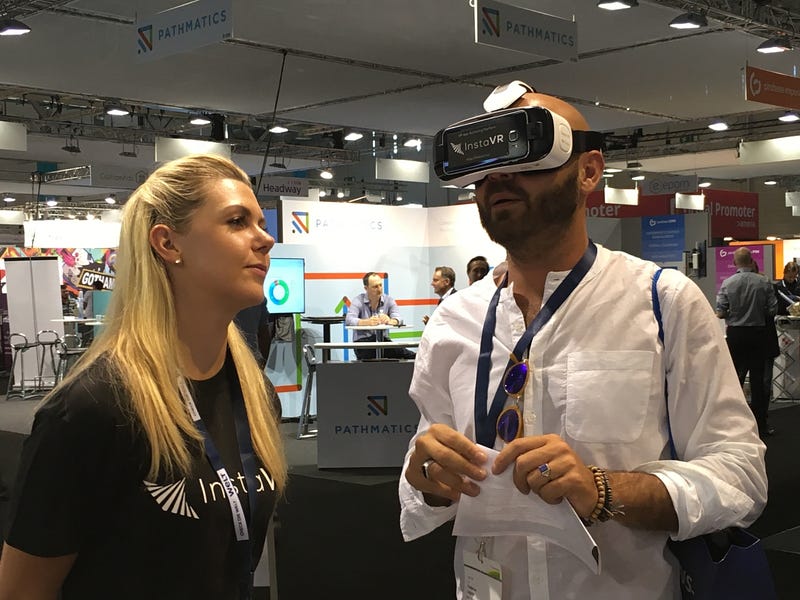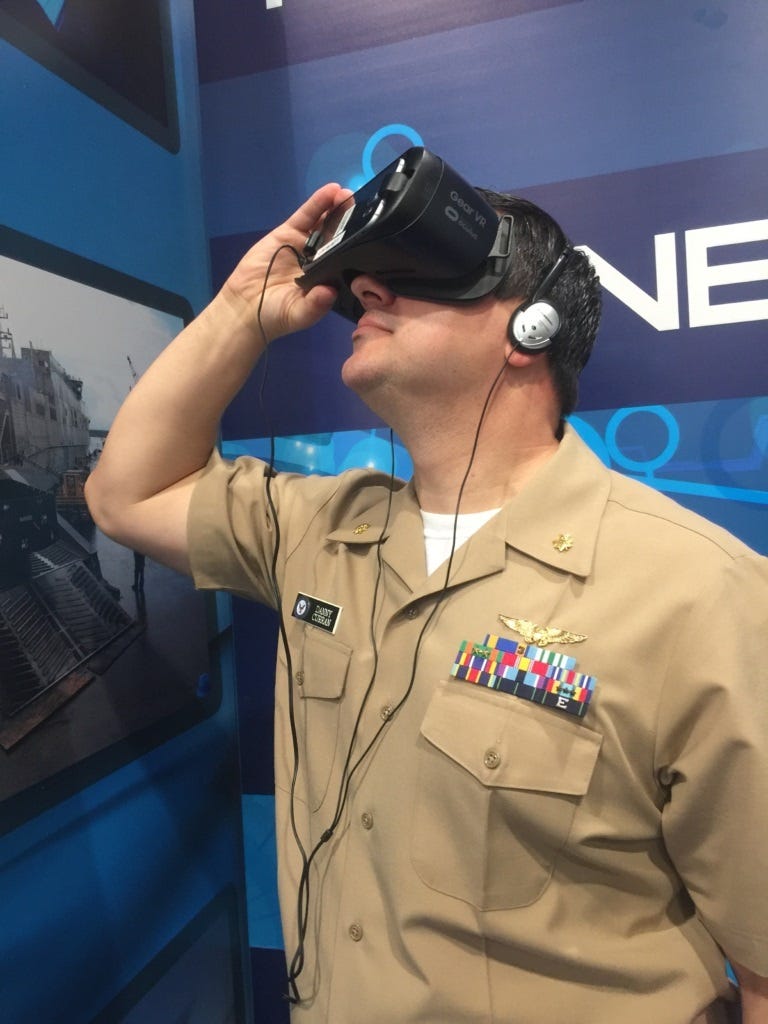This week, Samsung will be revealing a new smartphone (Galaxy Note8) and — assuming the rumors are true — a new Gear VR headset. That isn’t too surprising to any of us that follow the industry. Their latest product release in April, a hand controller, was largely to play catch up to competitor Google Daydream. But the leading non-Cardboard based headset maker is due for a new splashy product launch, and now seems like good timing.
Their growth to date — 10 million VR headsets expected shipped before the end of the year — absolutely dwarfs the Enterprise competition, including Facebook’s Oculus Rift, HTC’s Vice, and Google’s Daydream. How have they been so successful?
First, they made Gear VR compatible with the popular Galaxy line of phones, meaning the potential audience has been huge. (Google, until recently, only had Daydream paired up to work with their own Pixel phones — a way to better launch the Pixel line, to the detriment of Daydream sales). Second, they only focused on mobile VR, making Gear VR more portable for people in sales, marketing, training, and other related industries. Third, they packaged up the VR headset free with certain Galaxy phones for a time, getting enough Gear VRs in the market to generate some viral growth (ie the more people using Gear VRs, the more interest in the platform). And finally, anything but quietly, they spent significant money on ads during live broadcast television events, such as the Super Bowl and Oscars.
Leaving aside the above distribution and promotion strategy, let’s talk about why the Gear VR headset is so great:
- It’s mobile. Mobility is key. Unlike the tethered HTC Vive and Oculus Rift, I can easily toss two Gear VRs into my carry-on bag to take to tradeshows. I can pass them around without much lead time on set-up. They are, in a word, simple.

2. It’s made for long-form/high quality VR. The 360 space is rapidly moving from still image based to video based, as cameras get better. The Samsung Gear VR, unlike traditional mobile phones, is built to handle that. You can add SD storage easily to your phone, and publish from InstaVR to that phone a 20+ minute VR video. This is great for VR training or VR education applications. That the platform can handle 8K resolution will also be significant going forward.

3. It’s comfortable and immersive. Let’s be honest — nobody looks cool wearing a VR headset. So they might as well be comfortable. And while not as lightweight as the Google Daydream, the Gear VR is generally more comfortable and definitely more immersive than you get with Google Cardboard or other similar lower end iOS/Android headsets.

We’ll be very interested to see the next generation of Gear VRs when they’re announced this week. Samsung has put a lot of money into the development and marketing of the platform. And though it hasn’t received the same level of press of as Oculus Rift, it truly is (currently) the most dominant VR headset on the market.
More Gear VR Reading on the InstaVR Site:
How to Create a Gear VR App Using InstaVR
What Industries Are Gear VR Apps Best For?
How to Use a Gear VR Controller With Your Apps
How to Stream Samsung Gear VR Apps to a Television





